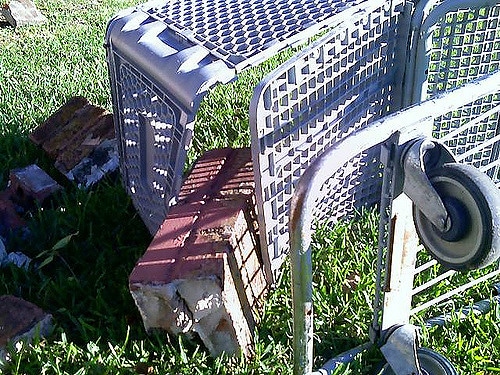
The previous post looked at some of the components of the food desert problem. People who live in nice neighborhoods like the residential quality and do not mind driving to distant grocery stores. Even people in less prosperous neighborhoods prefer stores that are farther, yet more economical, and are fine with driving to them, as long as they have cars. The pain is really felt among people who do not have cars, and some cities take this seriously.
In Portland, Oregon, for instance, the Bureau of Planning and Sustainability (BPS)issued a lengthy study, identifying five variables (conveniently all starting with the same letter): affordability, accessibility, availability, awareness, and appropriateness. They also formulated five city-wide recommendations and 10 neighborhood-level recommendations — actually nine, because “Require a food access impact assessment before reducing transit service” is listed twice.
Bus rides
A safe and reliable travel method is important. Amazingly, some cities still have functional public transportation, and buses are a prime example. Do planners remember that even the best bus system is far from a great solution? Any grocery procurement mission that involves a bus also necessarily involves ambulation. Nobody gets a bus ride from door to door. A shopper might come home with a full backpack and multiple bags in both hands. Carrying grocery bags is difficult for the old and infirm, and even for the young and healthy: It occupies the hands and leaves a person vulnerable to mugging.
Another shopper might rely on a wheeled cart, but even so, 10 pounds of potatoes, a gallon of white vinegar, and a six-pack of bathroom tissue pretty much fill up the available space. Maybe the answer is to buy a smaller bottle of vinegar, five pounds of potatoes, a single bathroom roll, and save room for other purchases.
That suggestion leads directly back to the subject of deprivation amplification, the idea that misfortune breeds further misfortune. Any conscientious shopper knows that buying things in larger quantities usually saves money — and requires a capacious car trunk.
Walk a mile in their shoes
Grocery shopping without a vehicle presents other challenges. Unable to carry as much in one trip, a person has to make more frequent trips, which eats up time that could be more productively used. For a parent with two or three kids to wrangle, car-free grocery shopping can be an ordeal. How do you even carry the groceries while pushing a stroller or holding children’s hands?
Or, say, there’s no stroller, and the shopper has a personal wheeled cart. It needs to be pushed or pulled, maneuvered up and down curbs, and it does not function well in snow and ice. Any cart sturdy enough to be really useful is going to cost some bucks. And what if it’s hot outside? It doesn’t take long in the sun for food items that are supposed to stay cold to warm up. There’s the wait at the bus stop, and then the ride, and the walk home — plenty of time for the eggs to start cooking.
Another problem arises when the bus shopper does not bring a personal utility cart, but leaves the store with only bags. Getting off the bus near home, the customer will need to carry full bags some distance. That can’t be helped. But why — and this reasoning admittedly makes sense — lug the bags from the store to the bus stop? Lots of people just take off with the store’s grocery cart, and abandon it at the corner, leaving it to roll out into the street or whatever. Each year a certain number of grocery carts are ruined or lost, and their replacement cost is shared by all the business’ customers.
Even one of Portland’s fabulously optimistic planners was quoted as saying,
Walking with groceries is not a realistic scenario.
Your responses and feedback are welcome!
Source: “Visioning For Healthful Food Access In Portland,” PDX.edy, June 2009
Photo credit: Nieve44/Luz on Visualhunt/CC BY

 FAQs and Media Requests:
FAQs and Media Requests: 











